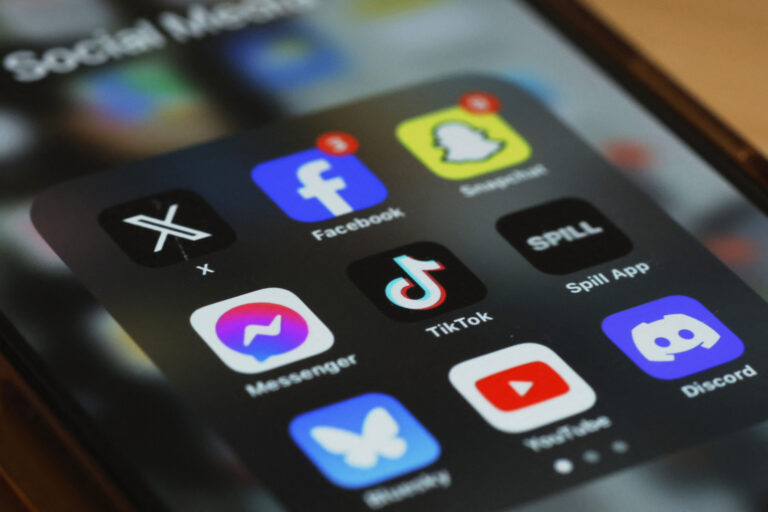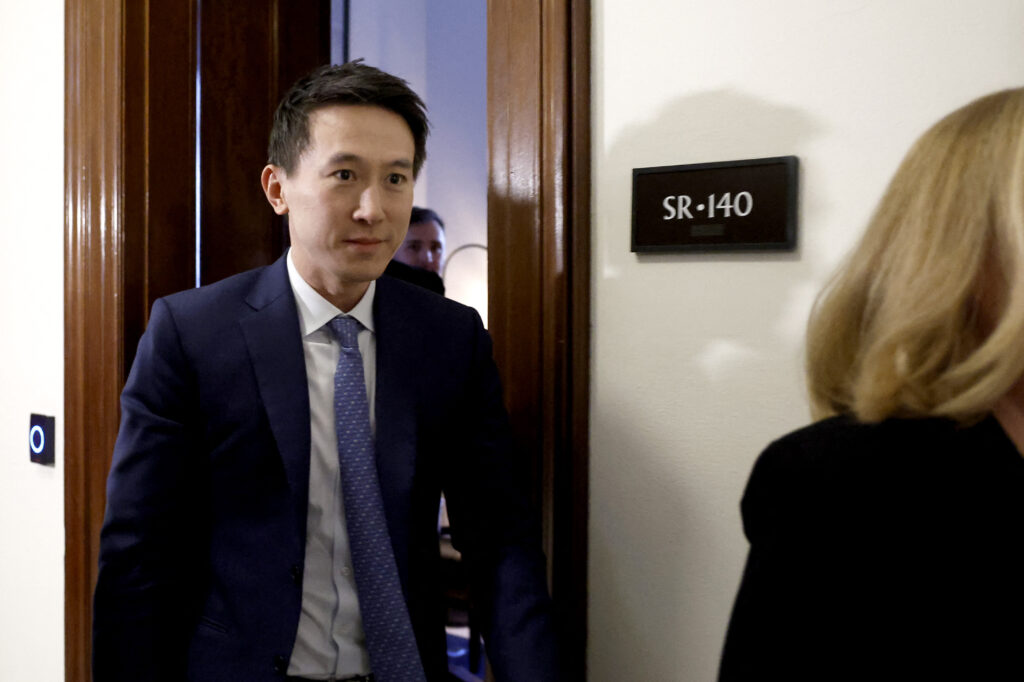
Social media usage among teenagers is at an all-time high.
Teenagers spend an average of seven hours and 22 minutes daily on screens, with 2 hours and 22 minutes dedicated to social media, according to a study by Common Sense Media. That’s longer than the time they spend sleeping, studying, or engaging in face-to-face interactions.
As many parents have seen, this data only confirms how social media has become an integral part of a teenager’s life. It shapes their interactions, behaviours, and perceptions. There are benefits, of course, like greater connectivity and access to information, but they often feel overshadowed by the more negative social media impact on teens.
Almost all (97%) US teens use at least one social media platform, with 45% admitting to being online “almost constantly,” a 2024 report by the Pew Research Center reveals. Platforms like Instagram, TikTok, Snapchat, and Facebook are not mere tools for communication but central hubs for self-expression, entertainment, and socialising among teens.
However, this constant connectivity also brings potential risks. The rapid expansion of social media platforms has significantly influenced teenagers’ mental health, academic performance, and social interactions — a concern highlighted by US Surgeon General Vivek Murthy, MD, MBA.
His 2023 advisory on “Social Media and Youth Mental Health” emphasises mounting evidence linking frequent social media use is causing harm to young people’s mental health.

Dr. Murthy’s report indicates that more research is needed to fully understand social media’s impact, leaving parents without easy answers. Source: AFP
The report further stresses that the brain undergoes a sensitive phase from ages 10 to 19, which is crucial for forming identities and self-worth. Regular social media use may lead to significant changes in the developing brain, impacting emotional learning and behaviour, impulse control, and emotional regulation.
Why social media is the top worry of parents today
The adolescent years are a crucial period of development, marked by a search for identity and increased susceptibility to external influences.
Social media’s instant gratification and validation have often worsened these vulnerabilities. A 2022 survey by the Pew Research Center found that 38% of teens feel overwhelmed by social media drama, while 29% experience pressure to post content for likes and comments.
This can be due to a combination of factors.
Scrolling through social media feeds can be like flipping through a photo album of others’ perfect vacations and happiest moments. People often share edited photos that create an illusion of flawless lives and bodies.
For teens constantly exposed to these unrealistic images, it can lead to feelings of inadequacy and low self-esteem. Researchers have found spending too much time on social media is linked to increased risks of depression, anxiety, and eating disorders as well, driven by the pressure to meet unrealistic beauty standards.
It’s something Dr. Wendy Suzuki, a Professor of Neural Science and Psychology at New York University, knows well.
“Enormous amounts of evidence shows that the increase in the use of social media, especially in young kids, correlates with huge increases in depression and anxiety levels, particularly in young girls,” says Dr. Suzuki during her interview in The Diary Of A CEO podcast with Steven Barlett.
“When kids started getting the smartphones and started to spend more than seven hours a day on social media, that’s when the anxiety and depression went up for them.”
Apart from that, the addictive nature of these social media platforms can lead to decreased academic performance, disrupted sleep patterns, and reduced physical activity, all of which are critical for a teen’s overall well-being.
If that’s not bad enough, the potential for cyberbullying, exposure to inappropriate content, and the perpetuation of unrealistic body images have further raised alarms among parents, educators, and mental health professionals.
The tragic case of 30-year-old Rajeswary Appahu, a Malaysian TikToker who died by suicide after enduring months of cyberbullying, highlights the impact of online harassment and how extreme cases can be fatal. If cyberbullying can have such a severe impact on a grown adult, imagine the vulnerability of teenagers facing similar attacks.

Nearly half of US teens ages 13 to 17 (46%) reported experiencing at least one form of cyberbullying in a Pew Research Center survey conducted in 2022. Source: AFP
Popular platforms among teens
In 2024, YouTube, TikTok, Snapchat and Instagram remain the dominant social media platforms among teenagers. Each platform has implemented updates aimed at enhancing user experience and safety, yet these changes have had mixed impacts on teens.
YouTube
YouTube remains a favourite among teens as a hub for everything from homework help to the immensely popular “study with me” series. The platform’s 2024 updates include enhanced content filtering options and improved algorithms to recommend age-appropriate content.
YouTube has launched initiatives to promote digital literacy and critical thinking among young users as well. However, the platform’s algorithm-driven recommendations can sometimes lead teens down rabbit holes of harmful content, necessitating vigilant monitoring by parents and guardians.
TikTok
Known for its short-form video content, TikTok has introduced new features to enhance user safety and well-being.
In 2024, TikTok rolled out a “Family Pairing” feature, allowing parents to link their accounts with their teens to manage screen time, restrict inappropriate content, and control direct messages. Plus, every account belonging to a user below the age of 18 will be set to a 60-minute daily screen time limit.

TikTok CEO Shou Zi Chew says the app strictly enforces its age policy for users 13 and up, providing a more restrictive experience for teens compared to adults. Source: AFP
Despite these efforts, concerns about TikTok’s addictive nature persist. Many teens spend several hours a day on the app, often at the expense of other activities. According to a report by Pew Research Centre, 58% of teens use TikTok daily with spend about 1.5 hours on the platform.
Instagram has made significant strides in addressing mental health concerns by introducing features like “Take a Break” reminders and a “Hidden Words” tool to filter out abusive comments.
The 2024 update includes an expanded “Parents’ Guide” that provides resources and tips for managing teens’ Instagram use.
Despite these improvements, Instagram’s focus on visual content continues to pressure teens to curate idealised versions of their lives, contributing to body image issues and social comparison.
Snapchat
Snapchat remains popular among teens for its ephemeral messaging and multimedia sharing.
In 2024, Snapchat introduced several new features to enhance safety and privacy. The “Snapchat Family Centre” allows parents to monitor who their teens are communicating with without seeing the content of the messages, aiming to strike a balance between privacy and oversight.
Snapchat has enhanced its content moderation tools to filter out inappropriate material more effectively. But the platform’s emphasis on transient content can sometimes encourage impulsive behaviour, and the pressure to maintain “Snapstreaks” can contribute to screen addiction.
Snapstreaks tracks how many days in a row you and a friend have sent Snaps to each other. Keeping up a Snapchat Streak gives you extra points for your Snapchat score. This can easily lead teens to log in to Snapchat daily.

A youth-led coalition, Design It For Us, displayed signs on the US Capitol’s west lawn, urging lawmakers to prioritize youth safety over Big Tech profits in social media. Source: AFP
Global school policies on social media use
Recognising social media’s pervasive influence on students, schools around the world have implemented policies to promote healthier usage habits. Several educational institutions introduced comprehensive digital citizenship programmes that teach students about the ethical and responsible use of social media.
In the US, several school districts have adopted the “Screen-Free Classroom” initiative, which encourages students to limit their device usage during school hours. This policy aims to reduce distractions, improve focus, and promote face-to-face interactions among students.
Other schools, like The King’s School partnered with ySafe, one of Australia’s leading providers of online safety education in launching a webinar to help parents and guardians better understand how to protect their children in the digital world.
The International School of Geneva has implemented a digital wellness policy to address the impact of social media on students. Their approach includes integrating digital citizenship into the curriculum, where students learn about online safety, privacy, and the implications of their digital footprint.
“Ensuring our students have the core skills to use this technology, and know how to use it responsibly, ethically and in a way that is respectful of others, plays a central role in our mission to educate students to be global digital citizens committed to transforming the world for the better,” the school shared in a LinkedIn post.








